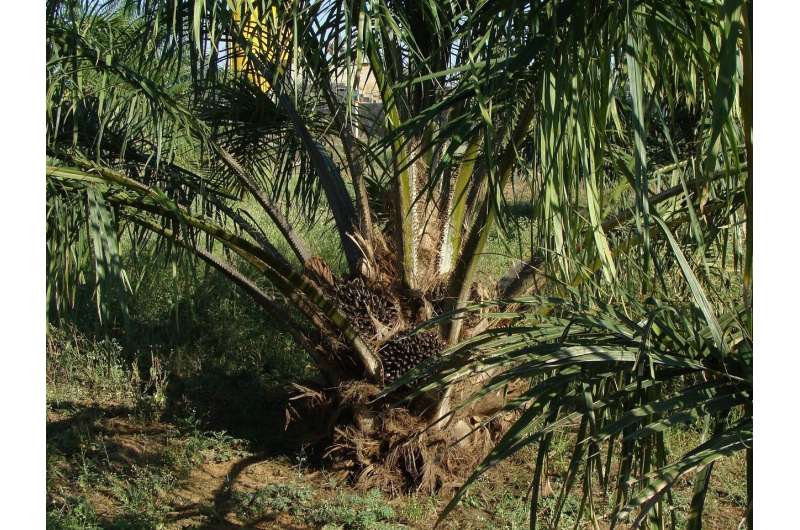Biodegradable plastics from palm oil waste

A biodegradable film made from waste from the palm oil industry could be used for food packaging
Plastic pollution is a pressing environmental concern of the twenty-first century. So is the palm oil industry, which is linked to widespread deforestation and habitat destruction. Research published in Current Research in Green and Sustainable Chemistry may be able to put a dent in both issues, with a biodegradable plastic film made from palm oil production waste.
Non-biodegradable single-use plastics, such as plastic bags and food wrappers, account for 40% of the plastic produced each year. "Hemicellulose is a naturally occurring biopolymer obtained from renewable materials such as polysaccharides and protein. It shows a huge potential for replacing non-biodegradable petroleum based polymers due to low cost and biodegradability," write the researchers, based at Universiti Sains Malaysia, in their paper.
In addition to plastic waste, 19.8 million tons of waste palm oil fruit bunches are discarded each year in Malaysia alone.To reduce the environmental impact of these forms of waste, the researchers have turned hemicellulose from waste palm oil fruit bunches into biodegradable films for green packaging.
Hemicellulose is abundant in agricultural and biomass waste. It is a promising biopolymer for film manufacturing applications as it is flexible, and has low gas permeability and high water resistance. Hemicellulose is also known to be a major component of the fruit bunches that are discarded by the palm oil industry. After extracting hemicellulose from bunches, the researchers confirmed that: "[Palm oil fruit bunches] can be identified as a potential raw material with a huge yield in the production of green packaging."
Although it has many properties that make it a potential viable alternative to other biopolymers, some properties—such as its brittle nature—limit its possible applications. As such, the researchers decided to blend it with the non-toxic, commercially available biopolymer carboxymethyl cellulose (CMC). This is known to have positive effects on the mechanical properties, transparency, flexibility, and moisture absorption of other biopolymers.
The team blended different amounts of hemicellulose from the palm oil fruit rusks with CMC. This was then made into biopolymer films of varying thicknesses (all under a tenth of a millimeter). Extensive investigation into the physical and chemical characteristics of the films revealed that those containing 60% hemicellulose had optimal properties for making biodegradable packaging materials.
This new hemicellulose blended material can offer a cheap and abundant biodegradable polymer. It presents a promising alternative to polluting non-biodegradable plastics. Although producing biopolymers from palm industry waste does not prevent further industry-related deforestation, using this by-product adds to value to the crop, and as the authors note: "Consequently, environmental impacts can be minimized significantly." They also hope that incorporating additives to make the hemicellulose-based films electronically or photocatalytically active will increase their possible future applications.
More information: P.R.D. Weerasooriya et al. Exploring the properties of hemicellulose based carboxymethyl cellulose film as a potential green packaging, Current Research in Green and Sustainable Chemistry (2020). DOI: 10.1016/j.crgsc.2020.05.001
Provided by SciencePOD





















